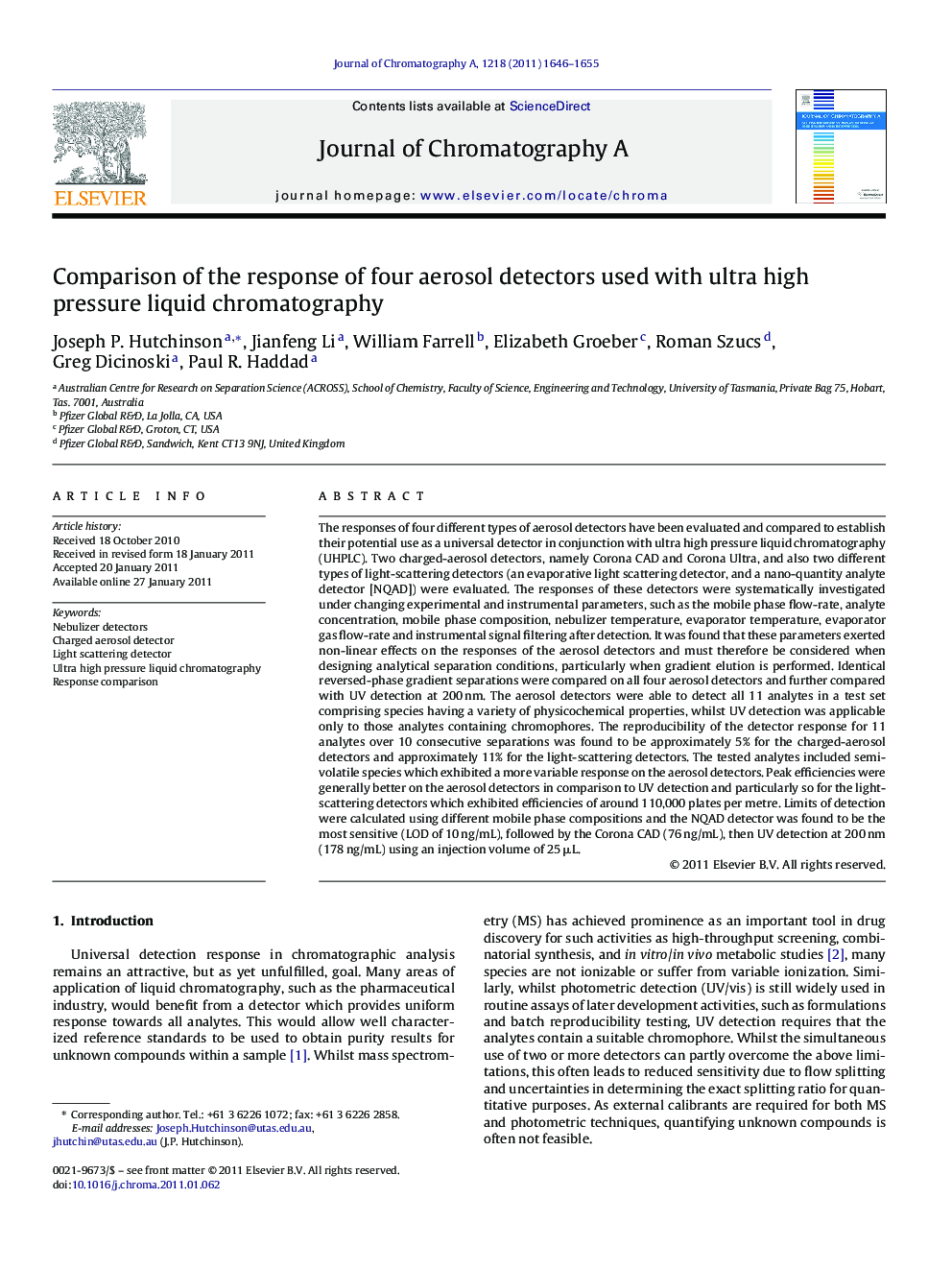| Article ID | Journal | Published Year | Pages | File Type |
|---|---|---|---|---|
| 1207984 | Journal of Chromatography A | 2011 | 10 Pages |
The responses of four different types of aerosol detectors have been evaluated and compared to establish their potential use as a universal detector in conjunction with ultra high pressure liquid chromatography (UHPLC). Two charged-aerosol detectors, namely Corona CAD and Corona Ultra, and also two different types of light-scattering detectors (an evaporative light scattering detector, and a nano-quantity analyte detector [NQAD]) were evaluated. The responses of these detectors were systematically investigated under changing experimental and instrumental parameters, such as the mobile phase flow-rate, analyte concentration, mobile phase composition, nebulizer temperature, evaporator temperature, evaporator gas flow-rate and instrumental signal filtering after detection. It was found that these parameters exerted non-linear effects on the responses of the aerosol detectors and must therefore be considered when designing analytical separation conditions, particularly when gradient elution is performed. Identical reversed-phase gradient separations were compared on all four aerosol detectors and further compared with UV detection at 200 nm. The aerosol detectors were able to detect all 11 analytes in a test set comprising species having a variety of physicochemical properties, whilst UV detection was applicable only to those analytes containing chromophores. The reproducibility of the detector response for 11 analytes over 10 consecutive separations was found to be approximately 5% for the charged-aerosol detectors and approximately 11% for the light-scattering detectors. The tested analytes included semi-volatile species which exhibited a more variable response on the aerosol detectors. Peak efficiencies were generally better on the aerosol detectors in comparison to UV detection and particularly so for the light-scattering detectors which exhibited efficiencies of around 110,000 plates per metre. Limits of detection were calculated using different mobile phase compositions and the NQAD detector was found to be the most sensitive (LOD of 10 ng/mL), followed by the Corona CAD (76 ng/mL), then UV detection at 200 nm (178 ng/mL) using an injection volume of 25 μL.
